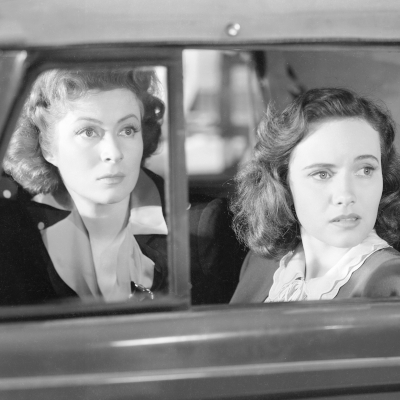For showtimes, click here.
Mrs. Miniver swept the Academy Awards in 1943, including winning Best Picture, Best Actress for Greer Garson, and Best Director for William Wyler. The film was also major financial success for MGM and an important moment for its lead actress.
Garson said, “This film was made with complete integrity. It was a study of an ordinary British family… and how ordinary, decent people behave under extraordinary circumstances and stress.”
1. Garson wasn’t sure about it.

While she enjoyed the novel, Greer Garson was a little worried about the adaption. She said, “I found that Mrs. Miniver, far from being a mouthpiece of stirring wartime sentiments, was a self-effacing creature.” She was also a little leery of the screenplay’s changes, including the fact that originally her character would become a grandmother – something that gave the thirty-eight year old actress some pause. However, the studio was able to convince her to take the part, and it became her third Academy Award nominated performance and her first Oscar win.
2. The movie was quite different than the book.

The novel ends at the beginning of the war, which is where the script’s timeline begins. Details about the Miniver family were kept intact, but since the essence of the story was shifting, the main plot points became inventions of the screenwriters who developed ideas from an air-raid warden, Arthur Wimperis, whose friends actually witnessed the Battle of Dunkirk. For director William Wyler, the changes also gave him the opportunity to comment on the times. He said, “I was a warmonger. I was concerned about Americans being isolationists. Mrs. Miniver obviously was a propoganda film.”
3. Bette Davis helped Garson.

As a director William Wyler was known to require multiple takes from his actors. Greer Garson found the experience challenging, especially since she felt her early takes were her best. At one point, she was required to light Walter Pigeon’s cigarette so many times that she became sick. Bette Davis, who worked with Wyler on Jezebel, The Letter, and The Little Foxes, encouraged her to hold on because he could help her achieve a great performance.
4. The final scene was reshot.

The film originally ended with a different speech from the vicar. However, after it was shot, Wyler found himself wrestling over it and decided that a new ending would better capture the necessary mood of the finale. At the time, Henry Wilcoxon, who played the vicar, had enlisted by this time, but the Navy allowed him to return to film the scene. The rewritten speech was so moving when President Roosevelt heard it, he had it played over the radio and passed out in leaflets in Europe.
















